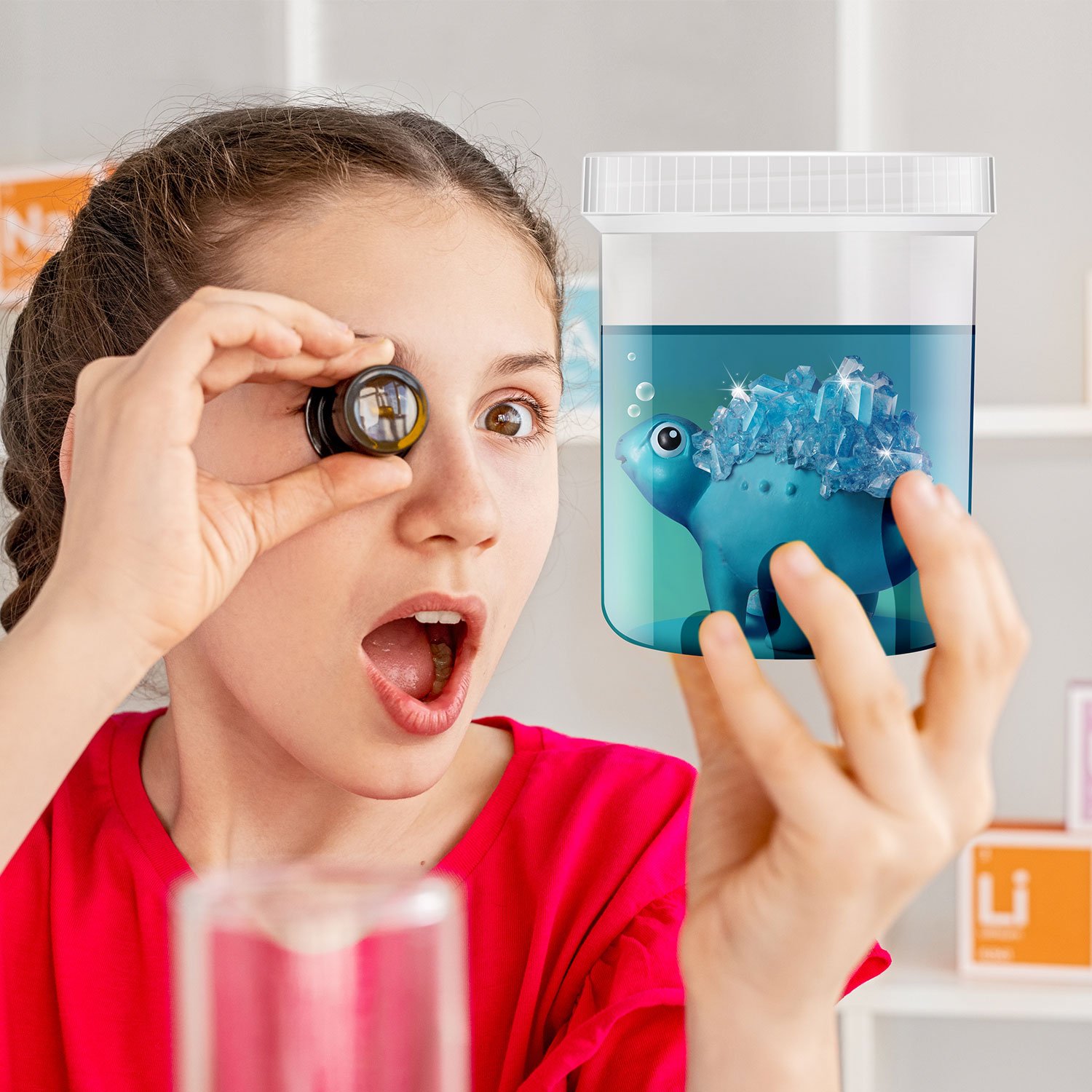Take your children and use the materials you can get at home to try these interesting and fun little science experiments.
With curious eyes and amazing screams, let’s explore DIY “science” experiments together.
Colored ice crystals
Experimental Materials:
ice cubes, some liquid paint, salt, a large tray
Experimental steps:
1. Sprinkle salt on ice cubes.
2. Feel free to ask children to add various liquid paints.
3. After the salt dissolves, a gully is formed on the ice cube, and the pigment flows down from top to bottom to form colorful ice crystals.
Experimental principle:
Salt is sodium chloride, and ice cubes are water. Sodium chloride is a chemical that is very soluble in water.
The dissolution of salt requires heat absorption, so ice cubes will form grooves due to the dissolution of salt.
Tall iceberg
Experimental materials: mineral water, ice cubes, bowls
Experimental steps:
1. Put the mineral water in the freezer of the refrigerator for 2 hours and 45 minutes.
It is best to be in a state of ice but not ice.
2. Find a bowl, put some ice cubes, and leave a place to pour iced mineral water.
3. Pour mineral water around the ice cubes, you will see the ice cubes in the middle grow taller!
Experimental principle:
Liquid water turns (freezes) into solid ice when it cools.
Discolored celery
Experimental materials: colored water, celery, water glass, water
Experimental steps:
1. The cup is filled with colored water
2. Put the celery into the colored water
3. After waiting for 4 hours, observe and find that the celery has changed color.
Experimental principle:
The stem is one of the vegetative organs of the plant, which supports the plant and transports water and nutrients.
The stem of the plant can transport the water and nutrients absorbed by the root to all parts of the plant from bottom to top.
The celery in the cup changes color precisely because the stalk conducts the colored water.
Transparent eggs
Experimental materials: a jar bottle, white vinegar, raw eggs
Experimental steps:
1. Put the eggs in the vinegar, the child can first observe the eggs floating in the water.
2. Then the white vinegar filled the egg with small bubbles.
3. After waiting for 48 hours, take out the eggs carefully, and the eggs will become transparent, thin, soft and elastic.
Experimental principle:
The main component of the eggshell is calcium carbonate. After chemical reaction with the acetic acid in white vinegar,
calcium acetate, carbon dioxide gas and water are generated,
so the eggshell gradually disappears and is wrapped by a film, and the egg becomes elastic.
Agic water bag
Experimental Materials:
pencil, plastic pocket, water
Experimental steps:
1. Fill the plastic bag full of water.
2. Insert a pencil straight through a pocket filled with water, but the water in the pocket does not leak.
Experimental principle:
The plastic bag is elastic, and after the regular-shaped pencil pierces the plastic bag,
the deformed bag wall can still wrap the outer edge of the pencil tightly, so the plastic bag can still be sealed and leak-proof.
Rainbow waterfall
Experimental Materials:
Colored crayons, hair dryer, cardboard
Experimental steps:
1. Arrange the colored crayons in a row and fix them on the cardboard, and heat them with a hair dryer to melt them.
2. The melted crayon turns into a liquid and presents an iridescent waterfall on the cardboard.
Experimental principle:
The crayon melts under the heat of the hair dryer, and the crayon changes from solid to liquid.
Magic Wizard’s Foamy Drink
Experimental materials: baking soda, white vinegar, several cups, food coloring
Experimental steps:
1. Pour the baking soda into the cup first, then drop the white vinegar into the coloring to turn it into colored vinegar.
2. Pour into a cup filled with baking soda, and wait for the magic to happen.
Experimental principle:
The main chemical composition of baking soda is NaHCO3, namely sodium bicarbonate, and there is acetic acid in white vinegar, namely CH3COOH.
The two can undergo metathesis reaction, resulting in a large number of bubbles.










